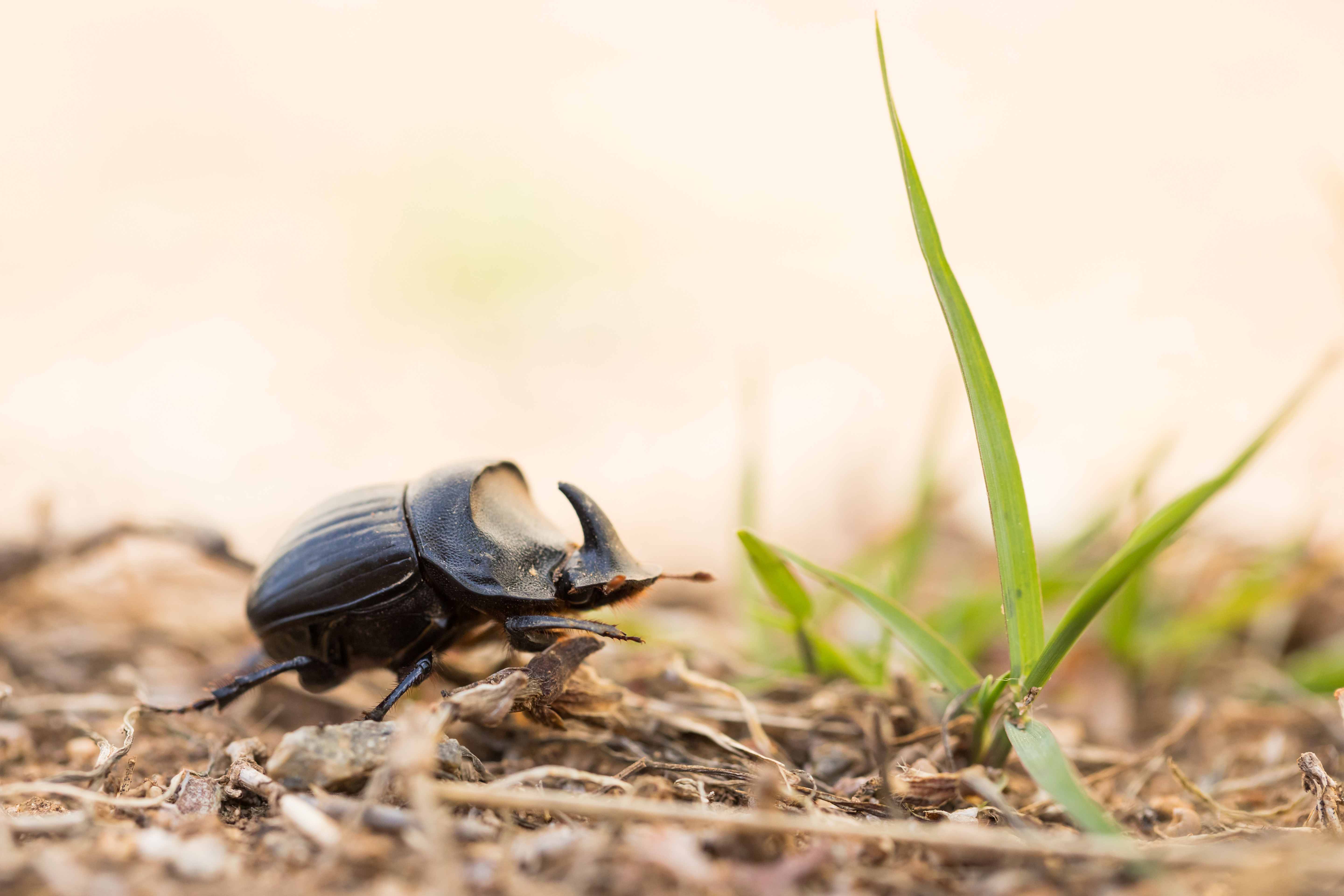The project was designed to establish what and where introduced dung beetle species have established across the Wheatbelt and to plan for filling gaps with species that will process animal dung in all seasons. We hope to achieve this through the re-introduction of beetles to areas where trapping did not reveal the presence of species when distribution maps indicated they should be present.
Many of the livestock producers in our region have long recognised the multitude of benefits that come from having a balanced dung beetle blanket across your farm throughout all seasons of the year. One Jennacubbine mixed farming producer signed up to the project because they were curious to see what species they had on their property.
Initially, the landholder signed up for the program after noticing dung beetle activity in the horse paddock but ended up making an entirely different observation of dung beetle action on the farm.
‘The dung beetle numbers in paddocks that are predominantly permanent pasture was much higher than the cropping paddocks that had experienced a short pasture phase.’ the producer reported.
To identify the gaps, we enlisted the assistance of 27 landholders who were as passionate about these kooky arthropods as we are. Between March 2022 and September 2023 our dedicated citizen scientists trapped and mapped dung beetle populations on their properties and came up with some eye opening data. Overall we identified 8 different dung beetle species active in the region (Insert species found data)
Legend : Dung beetle species expected to be found in the Wheatbelt.
|
Species name |
Legend symbol |
|
|
Bubas bison |
Bb |
|
|
Euoniticellus intermedius |
Ei |
|
|
Euoniticellus pallipes |
Ep |
|
|
Onitis alexis |
Oa |
|
|
Onitis aygulus |
Oay |
|
|
Onitis caffer |
Oc |
|
|
Onthophagus taurus |
Ot |
|
|
Euoniticellus fulvus |
Ef |
Expected to be found in the Swan and Northern Ag. region only. |
|
Onthophagus binodis |
Ob |
Expected to be found in the Swan and Northern Ag. region only. |
|
Onthophagus ferox (native) |
Of |
|
Table 1. Species trapped by region and season (Including data that was collected by Wheatbelt NRM and compiled through the DBEE /UWA project.)
|
Wheatbelt NRM – Avon River Basin |
||||
|
Trapping Location |
Spring |
Summer |
Autumn |
Winter |
|
Bakers Hill |
(Ot)(Oc) |
|
(Bb)(Oay)(Oa) |
(Bb) |
|
Brookton |
(Bb)(Ot) |
(Ot) |
|
(Bb) |
|
Gabbin |
|
|
(Oa)(Bb) |
|
|
Holt Rock |
|
|
(Bb) |
|
|
Jennacubbine |
(Bb) |
|
(Ep)(Oay)(Bb)(Ot) |
(Bb) |
|
Korbel* |
(Ot)(Ep)(Oc)(Ei)(Bb) |
(Ot)(Ei)(Ep)(Oa)(Oay) |
(Bb)(Ot)(Ep)(Ei)(Oay) |
(Bb) |
|
Kulin |
(Ot)(Bb) |
|
|
|
|
Northam |
|
|
|
(Bb) |
|
Northam 2 |
|
|
(Ep)(Oay)(Bb) |
|
|
Mokine |
|
|
(Bb)(Ot)(Ep)(Ei) |
(Ei)(Ep)(Bb) |
|
Tammin* |
(Ei)(Ot) |
(Oa)(Ei) |
(Ei)(Oa)(Bb)(Oay)(Ep) |
(Bb)(Ei)(Oa) |
|
Ucarty |
(Bb)(Ot)(Ei) |
|
|
|
|
Ucarty West |
|
|
|
(Of)(Oc)(Bb) |
|
Ucarty West 2* |
(Ot)(Ep)(Ei)(Bb)(Oc) |
(Ot)(Ep)(Ei)(Oay)(Oa) |
(Bb)(Ot)(Oay) |
(Bb) |
|
West Pingelly* |
(Ot)(Ep)(Bb) |
(Ot) |
(Ot)(Ep)(Oay) |
|
|
Wyalkatchem |
|
|
|
(Bb)(Oc) |
|
|
|
|
|
|
|
Perth NRM – Swan Region |
||||
|
Trapping Location |
Spring |
Summer |
Autumn |
Winter |
|
Bindoon |
(Bb)(Ot)(Oc) |
(Oa)(Ot) |
|
(Bb) |
|
|
|
|
|
|
|
Northern Agricultural Region |
||||
|
Trapping Location |
Spring |
Summer |
Autumn |
Winter |
|
Calingiri |
|
|
|
(Bb) |
|
|
|
|
|
|
Trapping began tentatively in Autumn 2022, with only 4 traps out of 15 that were set, luring dung beetles. When June rolled around the appearance of Bubas bison changed all that with landholders trapping many of the species along with other notable genus such as Onthophagus ferox (a native species) which was identified at Ucarty West. Bubas bison also played a starring role in the Spring trapping of 2022, along with the appearance of plenty of Onthophagus taurus.
Once the data from trapping events was compiled, we started to see how many gaps in dung beetle species we had in the Avon Basin and Wheatbelt.
- No Euonticellus fulvus or Onthophagus binodis was found at any of the sites and both were expected to be found in the Swan region and Euonticellus fulvus expected to be found in the Northern Agricultural region (2 of our sites were on the border of the region)
- Bubas bison was found widespread throughout the Wheatbelt. All sites identified Bubas bison at least once when trapping.
- Data also revealed seasonal gaps with less than 5% of total dung beetle individuals found active in Summer. This means that much of the animal dung being dropped in the paddock during that season will be sitting unburied until it is broken down with time.
This is where the final element of our project comes in; encouraging livestock producers to actively seek increasing dung beetle populations through mindful management AND considering introducing new species to provide a balanced active beetle blanket throughout all seasons of the year.
Preparations are underway to launch our how-to videos on “How to trap dung beetles” and another video on “building a dung beetle nursery on your property”.
Building your beetle nursery is an easy and affordable way to increase dung beetle species on your property which will benefit you and other local livestock owners improve soil health and increase pasture growth now and into the future.
For further information contact WNRM Project Officer, Aimee Ray on aray@wheatbeltnrm.org.au or 0420363052
This Project is Funded by The Commonwealth Government Smart Farms Program


